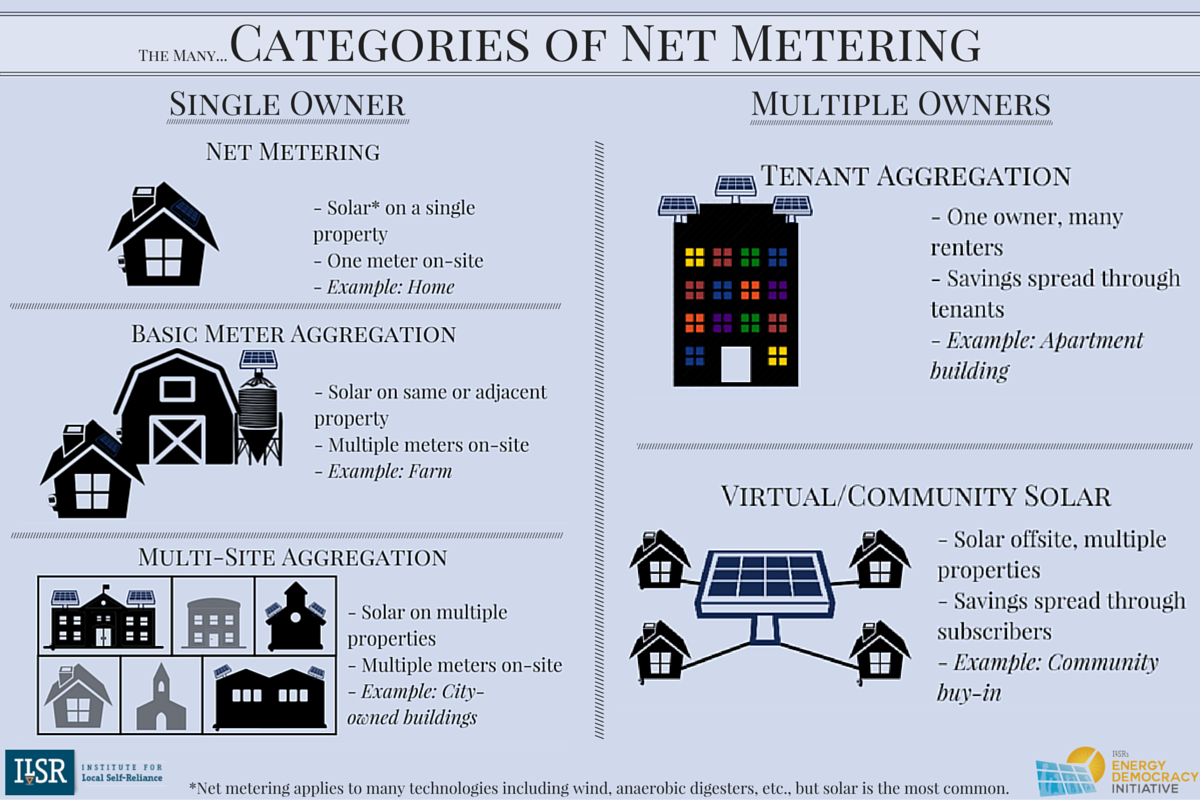Note: This page was last updated in 2015. For up to date information on net metering policies, please visit DSIREⓇ (Database of State Incentives for Renewables & Efficiency).
Net metering is a practice that encourages consumer investment in on-site electric generators – typically small-scale, renewable energy technologies. When a customer/generator is producing and consuming electricity at the same time, the laws of physics dictate that the electricity being produced flows to where it is being used. But what about when electricity is being generated and none is being consumed? In these instances net metering allows customer/generators to spin their meter backwards, in effect paying the customer/generator the retail rate for the electricity they generate but don’t immediately consume. If a customer generates more electricity than they consume over a period of time, they are typically paid for that net excess generation (NEG) at the utility’s avoided cost, or the wholesale rate.
Without net metering, small customer/generators usually have two meters, one measuring incoming electricity, for which they pay the retail rate, and one measuring the power they produce, for which they are compensated only at the utility’s avoided cost. Thus net metering provides a strong economic incentive for electricity customers to install on-site, small-scale, renewable generating capacity. We’ll get into the categories of net metering in text below, but here is a graphic representing all of them.
A majority of states have some type of net metering programs. Most have some common characteristics, including a size limit for qualifying generators and a statewide limit of qualifying capacity (typically about .01% of a utility’s peak load). Compensation for NEG is typically at the wholesale rate that the utility pays for electricity.
Dozens and dozens of states have enacted net metering rules. DSIREⓇ provides regularly updated summaries of state net metering policies. For a model net metering policy, check out “How Can Your State Get an ‘A’ Community Power Score.”
Aggregate Net Metering
Aggregate net metering is an add on to net metering allowing a utility customer to aggregate consumption at all of their buildings/meters into a single amount that can be offset from on-site generation connected to any meter. Without aggregation, a customer can only offset energy use on an electric meter with generation connected to that specific meter.
It’s a crucial policy for large entities, like municipalities, which control many buildings with separate meters but may only have a few good sites for on-site generation like solar. Check out our map of states that allow aggregate net metering (last updated in 2015).
Virtual Net Metering
Virtual net metering is a step further than aggregate net metering. It allows the generation to be located off-site, often anywhere within the utility’s service territory but still be treated as though it is on-site for the purposes of off-setting electricity consumption. Read more about the policy and the 11 states that allow it on ILSR’s virtual net metering page (last updated in 2016).
More Information:
- Interstate Renewable Energy Council’s Connecting to the Grid Guide (published in 2009)
- Summary Table of Net Metering Programs in the United States – by DSIREⓇ, ongoing updates



